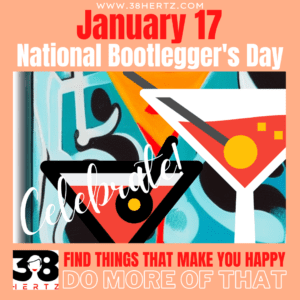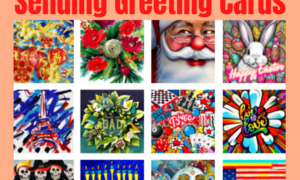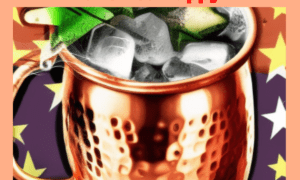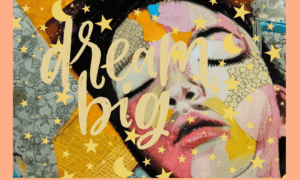
National Bootleggers Day is January 17!
Bootleggers were rule-breakers of the Prohibition era, when the sale and transportation of alcoholic beverages was illegal in America. They acquired liquor through illegal means and then transported it in secret to other locations to sell or trade. To avoid capture, bootleggers used various cunning tactics such as camouflaging cars with fake covers, altering car engines to make them more agile and faster, and even using coded language while on the phone.
Bootlegging could be a dangerous business, but some earned huge profits from their illicit activities. Nowadays, bootlegging has become a term for illegitimate activity related to any item – not just alcohol!
NATIONAL BOOTLEGGERS DAY: HISTORY OF BOOTLEGGERS
The history of bootleggers is intricately woven into the fabric of Prohibition-era America during the 1920s and early 1930s. As the 18th Amendment to the United States Constitution prohibited the manufacturing, sale, and transportation of alcoholic beverages, a clandestine and often illicit industry emerged to meet the demand for spirits. Bootleggers, named for the practice of concealing flasks of alcohol within their tall boots, played a pivotal role in the underground economy. These individuals engaged in the smuggling, production, and distribution of illegal alcohol, often resorting to covert methods to outsmart law enforcement.
Notorious figures like Al Capone became synonymous with the bootlegging trade, leading organized crime syndicates that capitalized on the lucrative black-market demand for alcohol. The era of bootlegging ultimately came to an end with the repeal of Prohibition in 1933, but its impact on American culture and organized crime left an indelible mark on the nation’s history. Read more about how to celebrate National Bootleggers Day below!
NATIONAL BOOTLEGGERS DAY: FIVE THINGS ABOUT BOOTLEGGERS
Celebrate National Bootleggers day by stepping into the shadows of the Roaring Twenties, an era defined by clandestine operations and the rebellious spirit of defiance against Prohibition. At the heart of this intoxicating chapter in American history were the bootleggers, enigmatic figures who navigated the underground world of illegal alcohol trade with cunning and flair. From secret speakeasies to modified vehicles evading law enforcement, bootleggers became the architects of a covert industry that flourished in the darkness of the prohibition era.
- Secret Stashes: Bootleggers often hid flasks of illegal alcohol in the tall boots they wore, giving rise to the term “bootleggers.”
- Moonshine Origins: The term “moonshine” originated from the practice of producing illicit alcohol by the light of the moon to avoid detection.
- Innovative Concealment: Bootleggers used creative methods to conceal their activities, such as modifying vehicles to transport alcohol or using false bottoms in trucks to hide their illicit cargo.
- Code Language: To communicate covertly, bootleggers developed a code language. Phrases like “giggle water” for alcohol and “speakeasy” for an illegal bar became popular during Prohibition.
- Rise of NASCAR: The roots of NASCAR can be traced back to bootleggers modifying their cars to outrun law enforcement. After Prohibition, these modified cars found a new life in racing.
- Al Capone’s Empire: Notorious gangster Al Capone rose to prominence as a bootlegger during Prohibition, amassing wealth through the illegal alcohol trade in Chicago.
- Bathtub Gin: Homemade gin, known as “bathtub gin,” became a popular concoction during Prohibition, often made in small quantities at home due to the ban on legal alcohol production.
- Spectacular Raids: Law enforcement engaged in spectacular raids on speakeasies and hidden distilleries. However, the elusive nature of bootlegging operations often made it challenging to enforce Prohibition.
- The Ratification Rush: Prohibition, enacted with the 18th Amendment in 1920, led to a rush of ratifications for the 21st Amendment in 1933, repealing the ban on alcohol and bringing an end to the era of bootlegging.
- Cocktail Culture Origins: The Roaring Twenties, fueled by the clandestine activities of bootleggers, also gave rise to the sophisticated cocktail culture. Creative mixologists crafted inventive drinks to mask the flavors of inferior bootleg alcohol.
HOW TO CELEBRATE NATIONAL BOOTLEGGERS DAY
- Host a Roaring Twenties Party.
- Read about Al Capone.
- Watch the video, “Prohibition.”
- Purchase some Templeton Rye and drink it in these TR glasses.
- If you love the article image, purchase it on these fun products on Zazzle!
- Download the 38 Hertz Celebration Book for 365 days of celebrations.
Note: If the above links do not direct you to the appropriate referral on the first try, return to the article and try again.
Do you have any ideas about how to celebrate this day? Please share them!












